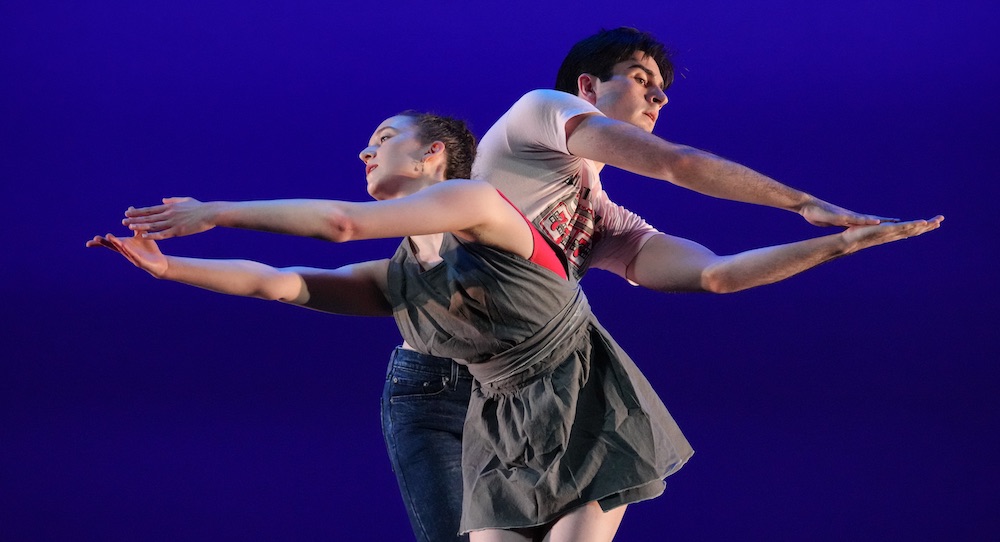The Kaye Playhouse, New York, NY.
April 18, 2024.
Tom Gold Dance, founded in 2008 by Tom Gold, held its spring season at The Kaye Playhouse at Hunter College on April 17 and 18, in NYC. While the company has performed works from many choreographers over the years, this season, all three pieces (one being a world premiere) on the program were original Tom Gold choreography. The evening was presented without an intermission.
The first piece, Counterpoint, a duet in four movements for man and woman, was set to two pieces by Steve Reich: “New York Counterpoint” (for clarinets) and “Nagoya Marimbas” (for xylophone). While both pieces of music had very different tonal qualities, they shared a gentle but driving pulsation. The dancing reflected the music in that sense. There was recognizable ballet vocabulary, and also deviations from it. A flexed foot here, a broken line there, but placed in such configuration that the movements acted as drivers in concert with the pulsation of the music.
The world premiere of Lavender is all the Rage filled the second spot on the program. For four dancers in four movements, this work is set to Ezio Bosso’s String Quartet No. 5 – Music for the Lodger. Like the piece prior, the style of the composition was a repetitive journey that felt wave-like in quality. In keeping with the structure of the music, the movement used geometric patterns and stylized walks to form a basis for the work. The title is a reference to the Lavender Scare of the McCarthy era which normalized the persecution of homosexual people.
Finally, we have Rapid Oxidation, a duet for two women. Set to music by Donald Knaack, aka The Junkman, we finish the night with the same style of charging, repetitive sounds. The duet portrays the experience of people who ignite each other’s creative passions. Costumed by Marlene Olson Hamm, the similar, yet different, black and white leotards show the individuality of the dancers, while also connecting them in a shared journey toward creativity. The dancers used crisp movements and head nods to express and support each other’s journeys.
All three pieces were exceptionally well danced by artists of high caliber. It was refreshing to attend a show that was shorter in length with no intermission – keeping the audience in the world of the choreography throughout the night. Musically, while consistent, the programming lent toward the monotonous as each piece was a different shade of the same tonal color. Tom Gold Dance typically holds both a spring and fall season, and often performs at outdoor venues around the city during the warmer months.
By Emily Sarkissian of Dance Informa.















